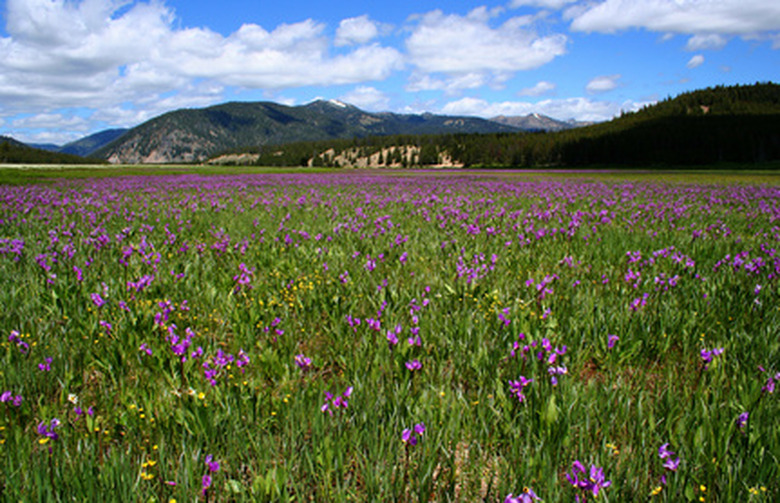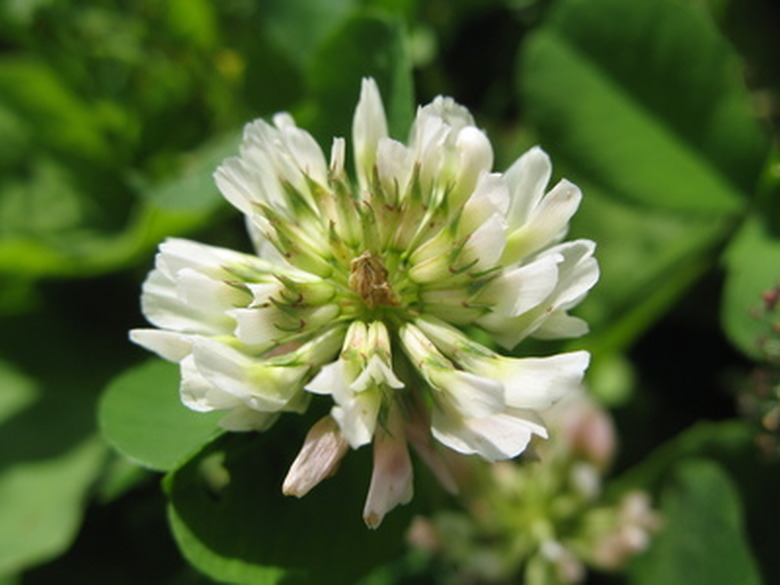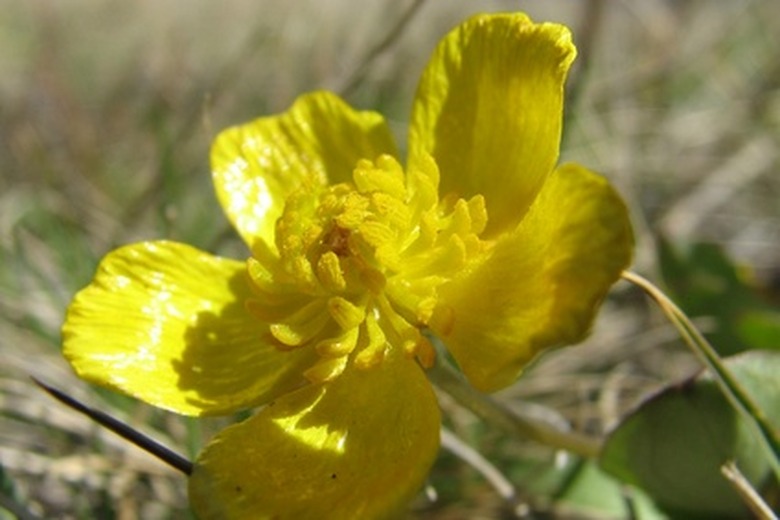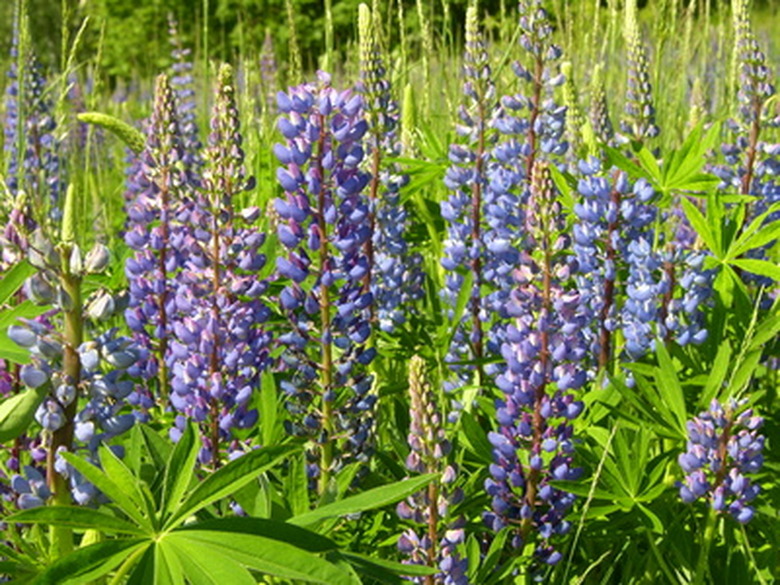List Of Meadow Flowers
A meadow garden is one way to create a more relaxing and inviting atmosphere that everyone can enjoy. Adding meadow flowers to your garden can help you achieve that natural beauty of a lea. Choose from a wide array of flowers to create a colorful meadow that will make your garden more appealing.
White Clover
White clover (Trifolium repens) is a perennial plant that is native to the eastern Mediterranean region and Asia. Thriving throughout the United States, except the Great Plains and extreme South, white clover can grow on lawns, fields, roadsides and disturbed habitats.
The plant grows up to 6 inches tall, branching from the base. The dark green leaves are alternate compound, found in threes, and have a white crescent in their center. The leaves initially grow from a short stem that soon elongates and sprawls up to a foot long on the ground. The leaflets measure approximately ¾ inch wide and half as long and are obovate or ovate with margins that are finely serrated.
- A meadow garden is one way to create a more relaxing and inviting atmosphere that everyone can enjoy.
- The leaves initially grow from a short stem that soon elongates and sprawls up to a foot long on the ground.
Unbranched and hairless flower heads that measure about 3/4 inch across appear on long, naked stalks. Each globular flower head has 20 to 50 flowers. Flowers are white or pinkish, narrowly tubular and bloom intermittently for several months from late spring through fall. Seedpods replace the flowers after they turn brown. Each seedpod contains flat, round to heart-shaped seeds in various colors.
Sow the seed in spring or early fall. Use moist soil surface lightly covered with additional soil. Clover does best in full sun to partial shade. Water daily as you water your lawn.
- Unbranched and hairless flower heads that measure about 3/4 inch across appear on long, naked stalks.
- Clover does best in full sun to partial shade.
Common Buttercup
Common buttercup (Ranunculus acris) is a perennial that originated in Europe and grows throughout most of North America, except the South Central and Southwestern United States. Found often on fields and meadows, common buttercups also grow along roadsides and disturbed areas.
The roots are hairy, fibrous and, occasionally, rhizomatous. Long-stemmed leaves are 3 inches in length and are basal, palmately lobed, mid-green, toothed and ovate. Flowers measuring 1 inch wide consisting of five to seven overlapping petals are in panicles, waxy, saucer-shaped and light yellow. Flowers bloom from May to September. Common buttercup grows 8 to 36 inches tall and 9 inches wide. Sow seeds in spring or early fall. Common buttercup prefers full sun, sand to clay loam with normal to moist water range.
- Common buttercup (Ranunculus acris) is a perennial that originated in Europe and grows throughout most of North America, except the South Central and Southwestern United States.
- Common buttercup prefers full sun, sand to clay loam with normal to moist water range.
Wild Lupine
Wild lupine (Lupinus perennis) is native to Mediterranean regions and parts of North and South America. This perennial plant can reach to 2 feet tall and produce blue-green palmate leaves. The leaves are the only larval food source of the federally endangered Karner blue butterfly. Blue-violet flower spikes measuring 8 to 18 inches high grow on semiprostrate stems and bloom from May to July. The flowers attract honeybees.
Seedpods develop quickly and mature to brown or black in early summer as the seed matures. Plant seed in late fall before ground freezes in desired location and cover with 3/4 inch of soil. Lightly rake seeds into bare patches of soil cleared of most competitive plants and weeds. Wild lupine prefers full sun to partial shade and well-drained, sandy loam that is slightly acidic. Ensure that the soil is dry in between watering.
- Wild lupine (Lupinus perennis) is native to Mediterranean regions and parts of North and South America.
- Plant seed in late fall before ground freezes in desired location and cover with 3/4 inch of soil.



